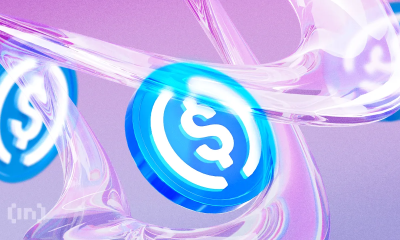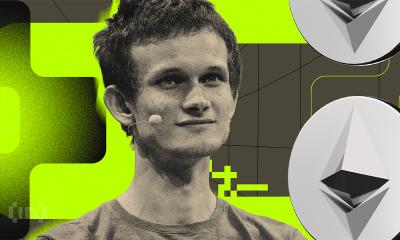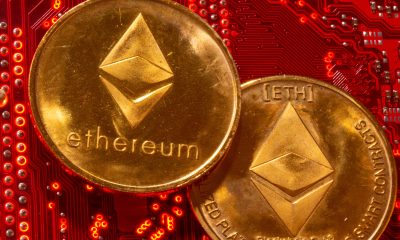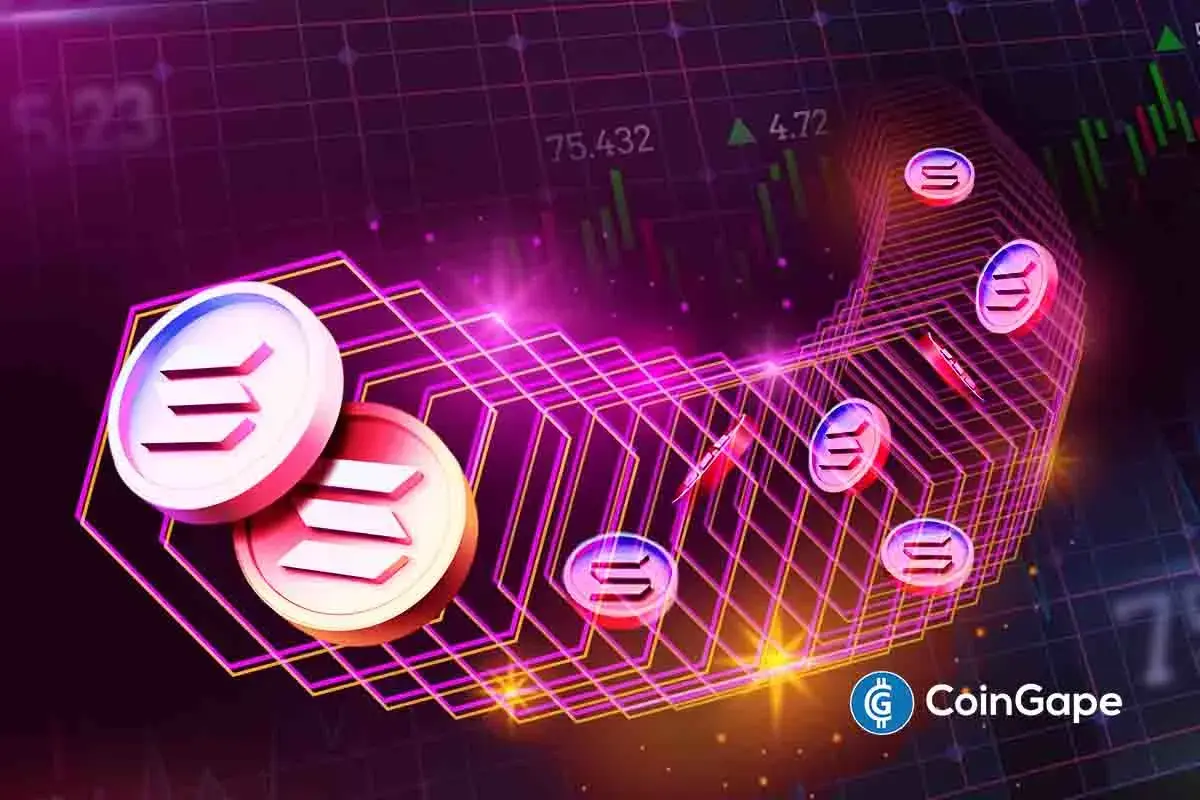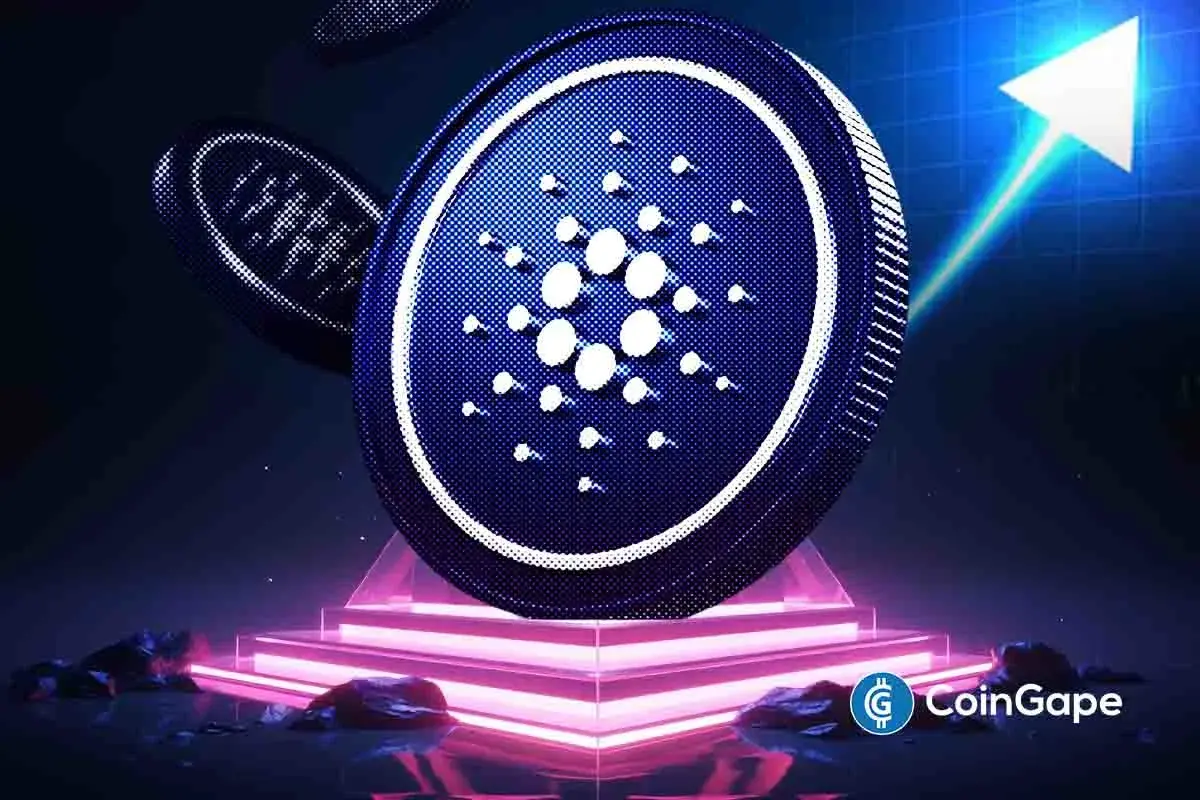Market
Buterin’s ‘Purge’ to Simplify Ethereum’s Protocol and Storage

Ethereum’s co-founder, Vitalik Buterin, has presented “The Purge,” the fifth installment in a series of proposed upgrades designed to streamline the Ethereum network’s data storage and protocol complexity.
This update is crucial as Ethereum’s long-term scalability, security, and sustainability hinge on a stable, manageable data architecture.
Tackling Ethereum Data Storage
Buterin’s Purge upgrade introduces a framework that targets Ethereum’s growing storage demands. By eliminating outdated network history, it aims to alleviate bottlenecks and cut the hard drive space required to run a node.
Currently, running an Ethereum node requires around 1.1 terabytes of disk space for the execution client alone, along with several hundred more gigabytes for the consensus client. Indeed, storage requirements grow by hundreds of gigabytes each year, even without raising Ethereum’s gas limit.
Read more: A Deeper Look into the Ethereum Network
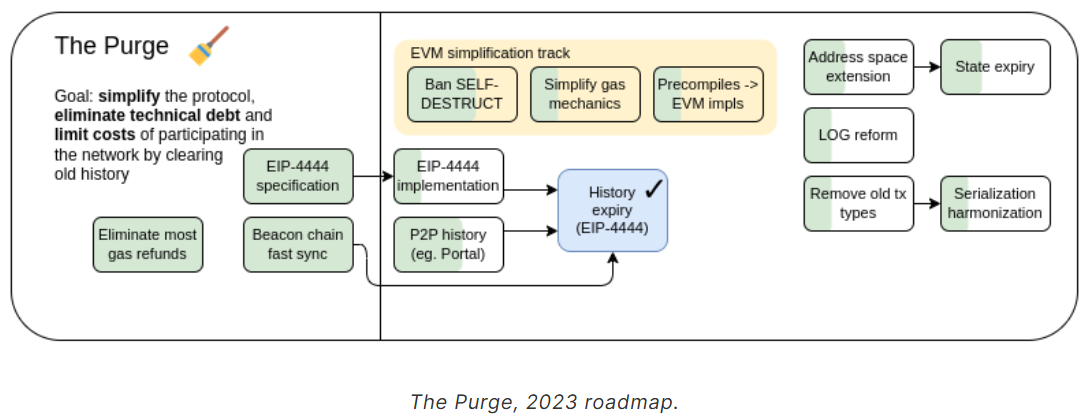
The Purge suggests a decentralized approach to data storage across network nodes. Instead of each node holding the full network history, they could store smaller, randomized segments. This would allow the network to maintain data redundancy without every node needing to store the same information.
“If, by making node running more affordable, we can get to a network with 100,000 nodes, where each node stores a random 10% of the history, then each piece of data would get replicated 10,000 times – exactly the same replication factor as a 10,000-node network where each node stores everything,” Buterin explained.
Another key proposal is to introduce a “stateless” approach to manage Ethereum’s state data. This could help keep total data under 8 terabytes for decades.
To further streamline storage, Buterin also suggests exploring either partial or full state expiry, where certain old data might phase out, combined with adjustments in address space. He noted that state expiry could simplify transitions between data formats, as new state trees could be phased in without complex conversions.
Simplifying the Protocol
Beyond storage, Buterin highlights the need to keep Ethereum’s protocol efficient and user-friendly. Simplifying the protocol could reduce bugs and make the network easier for developers and users to navigate.
One option is “ossification,” a process that freezes the protocol, halting new changes to enhance stability. Alternatively, Ethereum could selectively phase out outdated features, maintaining backward compatibility while minimizing unnecessary complexity.
“An intermediate route, of making fewer changes to the protocol, and also removing at least a little complexity over time, is also possible,” Buterin added.
Read more: When Are Ethereum Gas Fees Lowest?
Meanwhile, Buterin reiterated the need for simplicity and backward compatibility. According to him, this would provide stability for applications needing reliable, long-term support.
“Ethereum’s value as a chain comes from it being a platform where you can deploy an application and be confident that it will still work many years from now,” he concluded.
Disclaimer
In adherence to the Trust Project guidelines, BeInCrypto is committed to unbiased, transparent reporting. This news article aims to provide accurate, timely information. However, readers are advised to verify facts independently and consult with a professional before making any decisions based on this content. Please note that our Terms and Conditions, Privacy Policy, and Disclaimers have been updated.
Market
PI Token Price Faces Bearish Pressure, Risking a Drop to $0.40
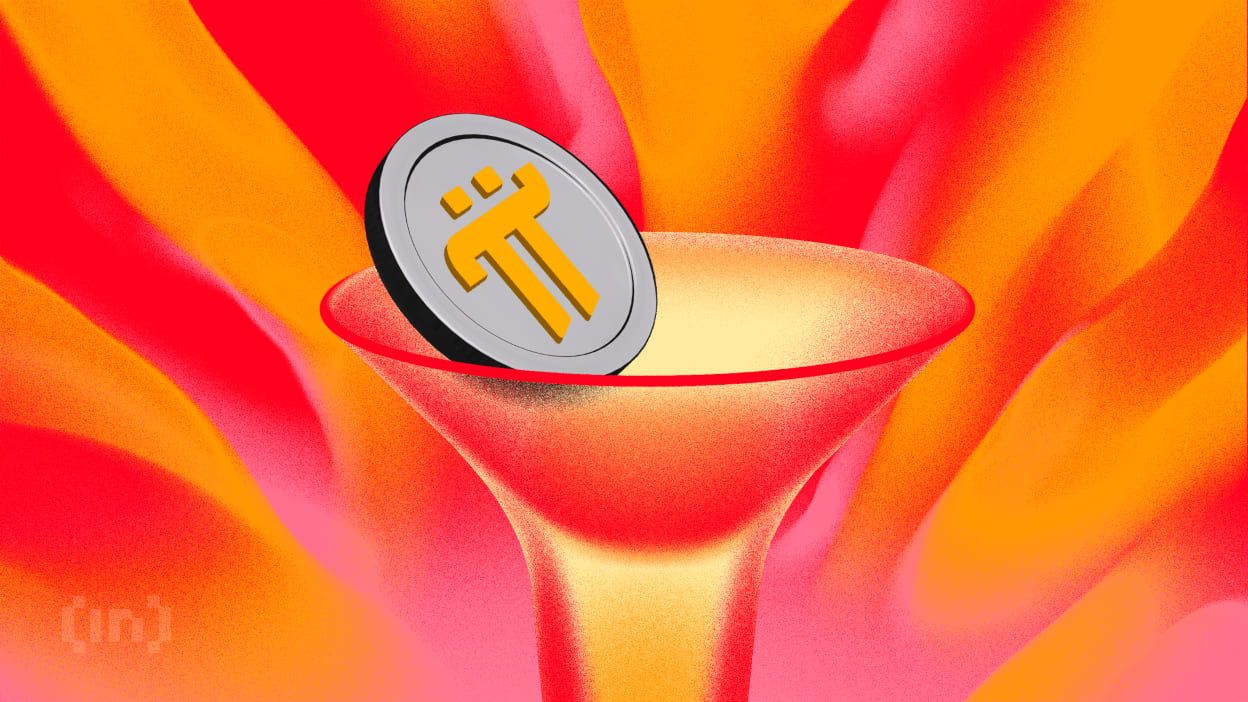
PI has been on a steady downtrend since February 26, shedding 72% of its value as bearish sentiment continues to weigh on the token.
Bearish pressure continues to mount on the PI token, suggesting that it may be poised to enter a new phase of decline.
PI Network Risks Fresh Decline
An assessment of the PI/USD one-day chart reveals that token holders remain steadfast in their distribution. At press time, PI’s Balance of Power (BoP) is negative, reflecting the selling pressure in the market.
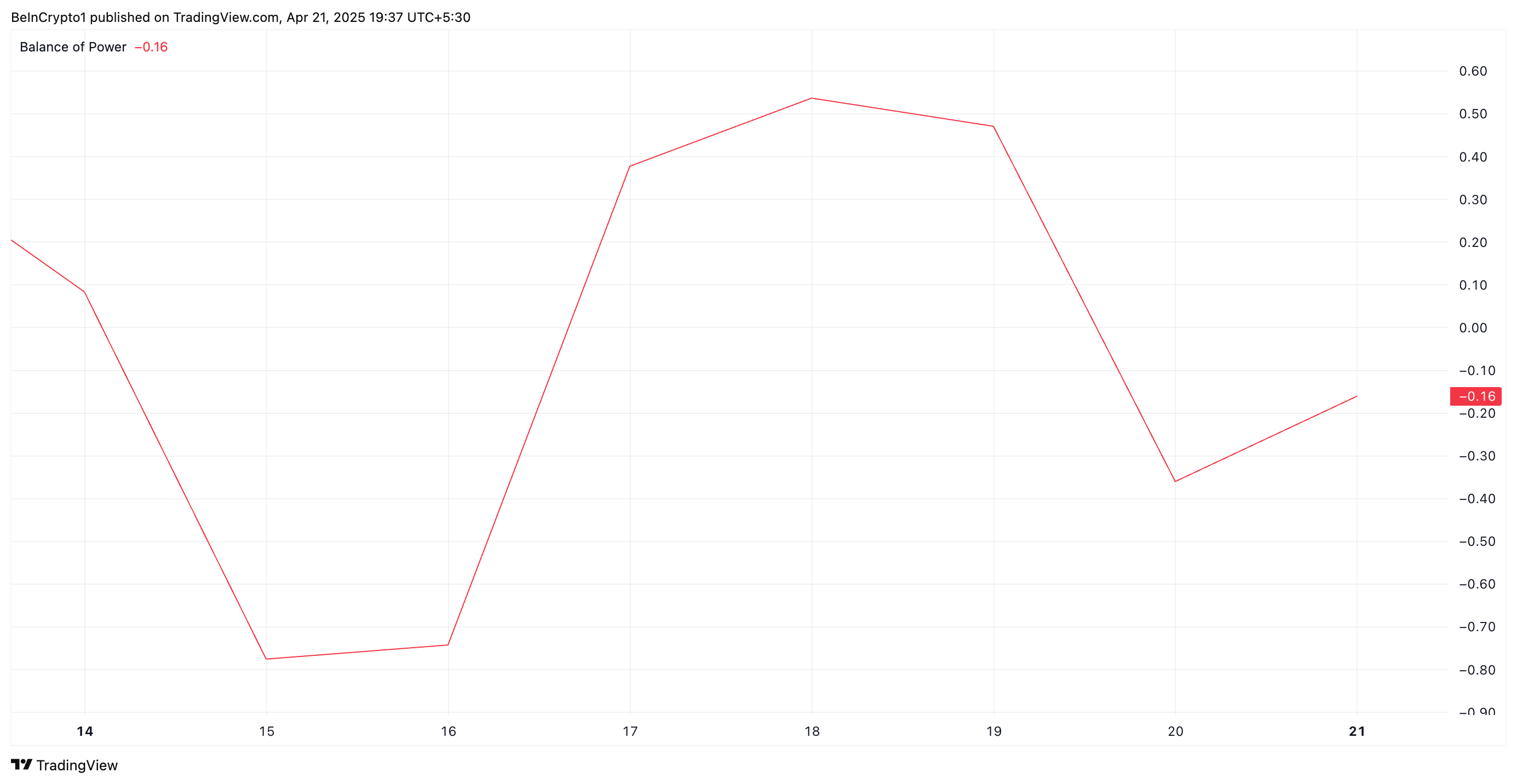
The BoP indicator measures the strength of buying versus selling pressure by comparing the close price to the trading range within a given period. When BOP is negative like this, it indicates that sellers are dominating the market, suggesting downward pressure on the asset’s price.
Further, the setup of PI’s Chaikin Money Flow (CMF) supports this bearish outlook. At press time, this is below the central line at -0.12.
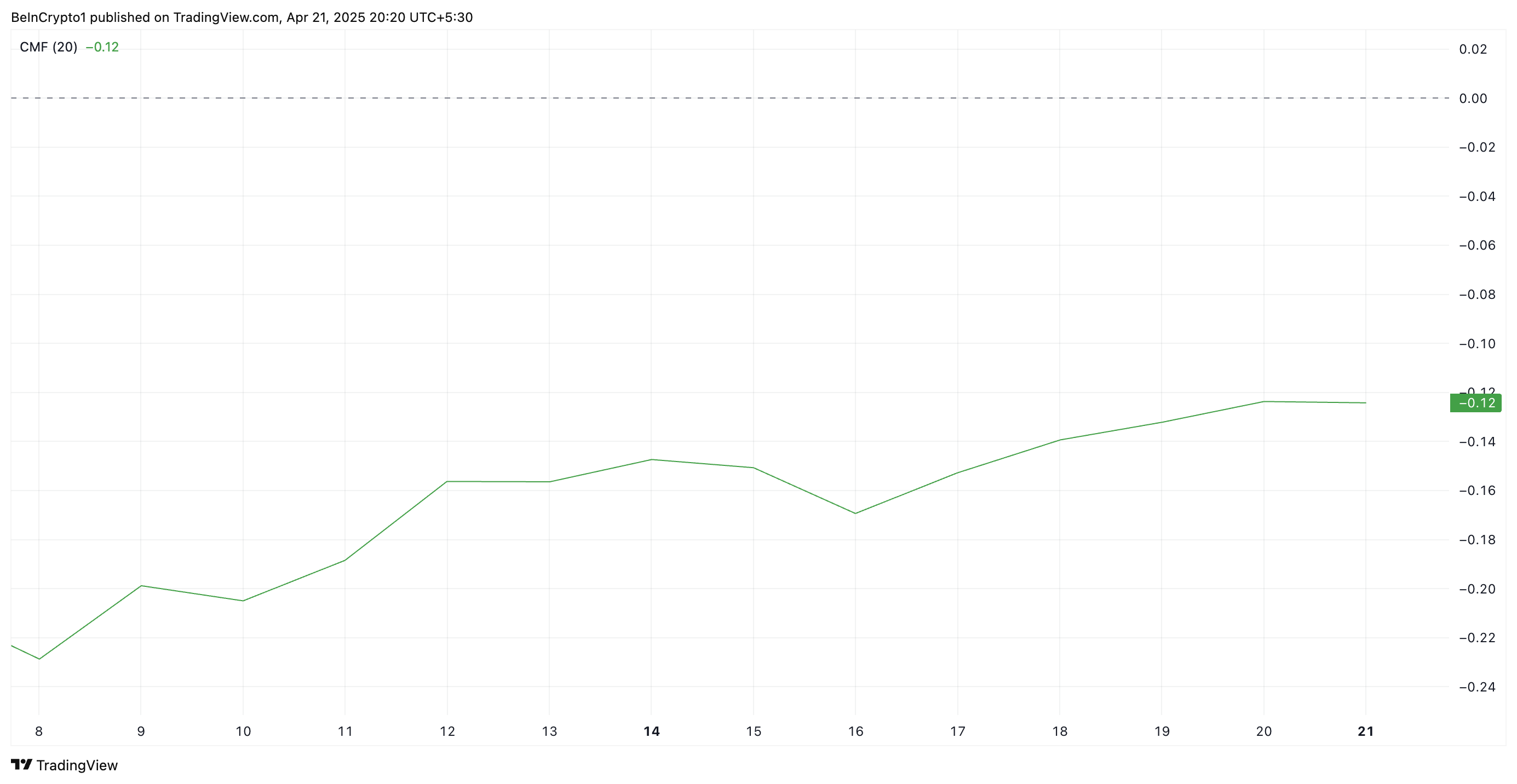
The CMF indicator measures an asset’s buying and selling pressure. A negative CMF reading suggests that the asset is experiencing more selling pressure than buying pressure. This means PI traders are distributing rather than accumulating. This signals bearish sentiment and confirms the downward momentum in the token’s price.
Sellers Tighten Grip on PI, But Recovery to $1.01 Still on the Table
At press time, PI trades at $0.63, below the dynamic support formed above it at $0.93 by its Super Trend indicator.
The Super Trend indicator helps traders identify the market’s direction by placing a line above or below the price chart based on the asset’s volatility.
When an asset’s price trades below the Super Trend line like this, it signals a bearish trend and hints at potential decline. If PI’s decline strengthens, it could revisit its all-time low of $0.40.
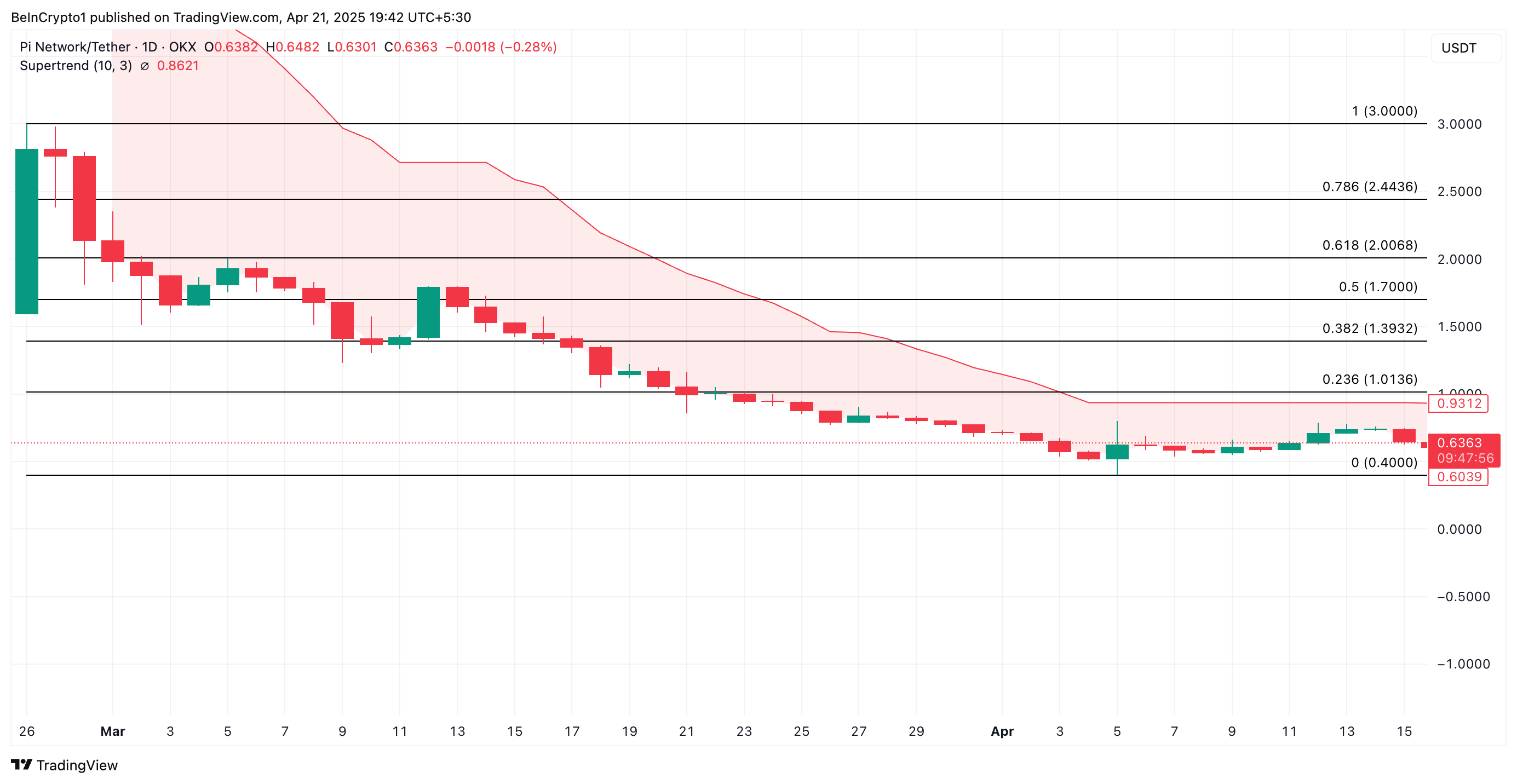
However, if demand returns to the PI market, its price could break above the resistance at $0.86 and surge to $1.01.
Disclaimer
In line with the Trust Project guidelines, this price analysis article is for informational purposes only and should not be considered financial or investment advice. BeInCrypto is committed to accurate, unbiased reporting, but market conditions are subject to change without notice. Always conduct your own research and consult with a professional before making any financial decisions. Please note that our Terms and Conditions, Privacy Policy, and Disclaimers have been updated.
Market
Circle, BitGo, and Others Eye Bank Charters in US
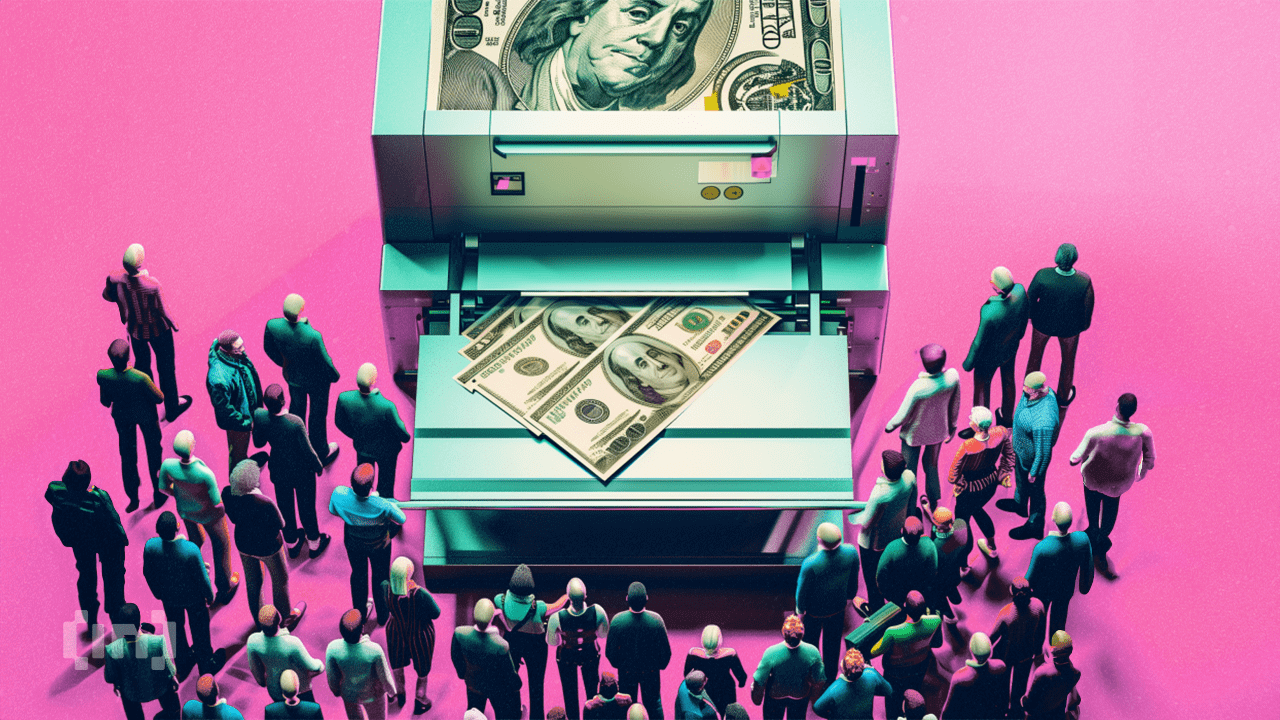

With support from Trump’s White House and easing regulations, firms like Circle and BitGo are pursuing becoming full-fledged financial institutions.
Reports indicate a new wave of crypto companies knocking on the once-closed doors of the American banking system. This time, someone is listening.
Crypto Firms Seek Bank Charters as Wall Street’s Doors Reopen
After years of being sidelined, crypto companies are coming back, this time through the front door of the US banking system.
Citing sources familiar with the matter, the Wall Street Journal revealed that several major players, including Circle and BitGo, are preparing to apply for bank charters or financial licenses.
Traditional banks are also responding to the shift. US Bancorp is re-launching its crypto custody program via NYDIG, while Bank of America (BofA) said it would issue its stablecoin once the legal framework is in place.
Even global giants are watching closely. A consortium including Deutsche Bank and Standard Chartered is evaluating how to expand crypto operations into the US.
While details remain scarce, the interest signals that crypto is no longer just a niche but a competitive frontier.
These firms reportedly aim to operate with the same legitimacy and access as traditional lenders. This includes holding deposits, issuing loans, and launching stablecoins under regulatory supervision.
The timing is not random. A sharp pivot in federal policy, driven by President Trump’s pledge to make the US a Bitcoin superpower, has reopened regulatory pathways once shut after the FTX collapse.
In parallel, Congress is advancing stablecoin legislation requiring issuers to secure federal or state licenses.
The push for bank status comes amid a broader effort to legitimize crypto within US finance. Earlier this year, regulators rolled back key restrictions. Among them, the SEC’s controversial SAB 121, which had blocked banks from holding crypto on behalf of clients.
Meanwhile, Federal Reserve (Fed) Chair Jerome Powell affirmed that banks could serve crypto customers provided proper risk management strategies exist.
In another regulatory green light, the Office of the Comptroller of the Currency (OCC) clarified that banks can offer stablecoin and custody services. However, this is provided they comply with established banking rules.
These signals have emboldened crypto firms previously kept at arm’s length. Anchorage Digital, the only US crypto-native firm with a federal bank charter, says the regulatory lift is massive but worth it.
“It hasn’t been easy… the whole gamut of regulatory and compliance obligations that banks have can be intertwined with the crypto industry,” Anchorage CEO Nathan McCauley reportedly admitted.
McCauley cited tens of millions in compliance costs. Nevertheless, Anchorage has since collaborated with BlackRock, Cantor Fitzgerald, and Copper for high-profile custody and lending programs.
BitGo, which will reportedly custody reserves for Trump-linked stablecoin USD1, is nearing a bank charter application.
Circle, the issuer of USDC, is also pursuing licenses while fending off competition, just like Tether. This is a traditional finance (TradFi) venture into stablecoins.
The firm delayed its IPO this month, citing market turmoil and financial uncertainty. However, insiders say regulatory clarity remains a top priority.
Firms like Coinbase and Paxos are exploring similar routes, considering industrial banks or trust charters to expand their financial offerings legally.
At the policy level, venture firm a16z has called on the SEC to modernize crypto custody rules for investment firms, reflecting the industry’s hunger for clarity and parity.
Disclaimer
In adherence to the Trust Project guidelines, BeInCrypto is committed to unbiased, transparent reporting. This news article aims to provide accurate, timely information. However, readers are advised to verify facts independently and consult with a professional before making any decisions based on this content. Please note that our Terms and Conditions, Privacy Policy, and Disclaimers have been updated.
Market
BNB Springs Back From $531 With Unshaken Bullish Conviction
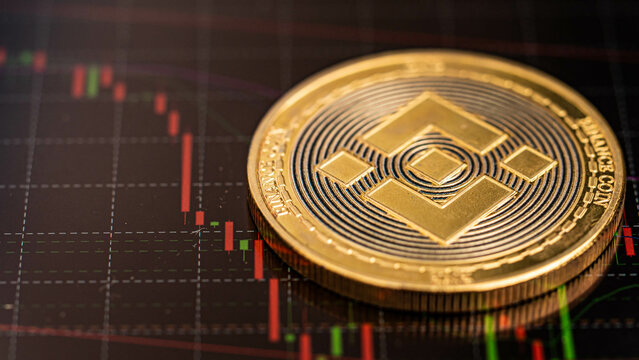
My name is Godspower Owie, and I was born and brought up in Edo State, Nigeria. I grew up with my three siblings who have always been my idols and mentors, helping me to grow and understand the way of life.
My parents are literally the backbone of my story. They’ve always supported me in good and bad times and never for once left my side whenever I feel lost in this world. Honestly, having such amazing parents makes you feel safe and secure, and I won’t trade them for anything else in this world.
I was exposed to the cryptocurrency world 3 years ago and got so interested in knowing so much about it. It all started when a friend of mine invested in a crypto asset, which he yielded massive gains from his investments.
When I confronted him about cryptocurrency he explained his journey so far in the field. It was impressive getting to know about his consistency and dedication in the space despite the risks involved, and these are the major reasons why I got so interested in cryptocurrency.
Trust me, I’ve had my share of experience with the ups and downs in the market but I never for once lost the passion to grow in the field. This is because I believe growth leads to excellence and that’s my goal in the field. And today, I am an employee of Bitcoinnist and NewsBTC news outlets.
My Bosses and co-workers are the best kinds of people I have ever worked with, in and outside the crypto landscape. I intend to give my all working alongside my amazing colleagues for the growth of these companies.
Sometimes I like to picture myself as an explorer, this is because I like visiting new places, I like learning new things (useful things to be precise), I like meeting new people – people who make an impact in my life no matter how little it is.
One of the things I love and enjoy doing the most is football. It will remain my favorite outdoor activity, probably because I’m so good at it. I am also very good at singing, dancing, acting, fashion and others.
I cherish my time, work, family, and loved ones. I mean, those are probably the most important things in anyone’s life. I don’t chase illusions, I chase dreams.
I know there is still a lot about myself that I need to figure out as I strive to become successful in life. I’m certain I will get there because I know I am not a quitter, and I will give my all till the very end to see myself at the top.
I aspire to be a boss someday, having people work under me just as I’ve worked under great people. This is one of my biggest dreams professionally, and one I do not take lightly. Everyone knows the road ahead is not as easy as it looks, but with God Almighty, my family, and shared passion friends, there is no stopping me.
-

 Market23 hours ago
Market23 hours agoTokens Big Players Are Buying
-
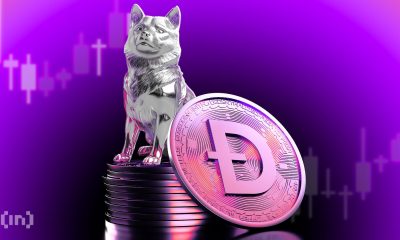
 Market22 hours ago
Market22 hours agoDogecoin Defies Bullish Bets During Dogeday Celebration
-
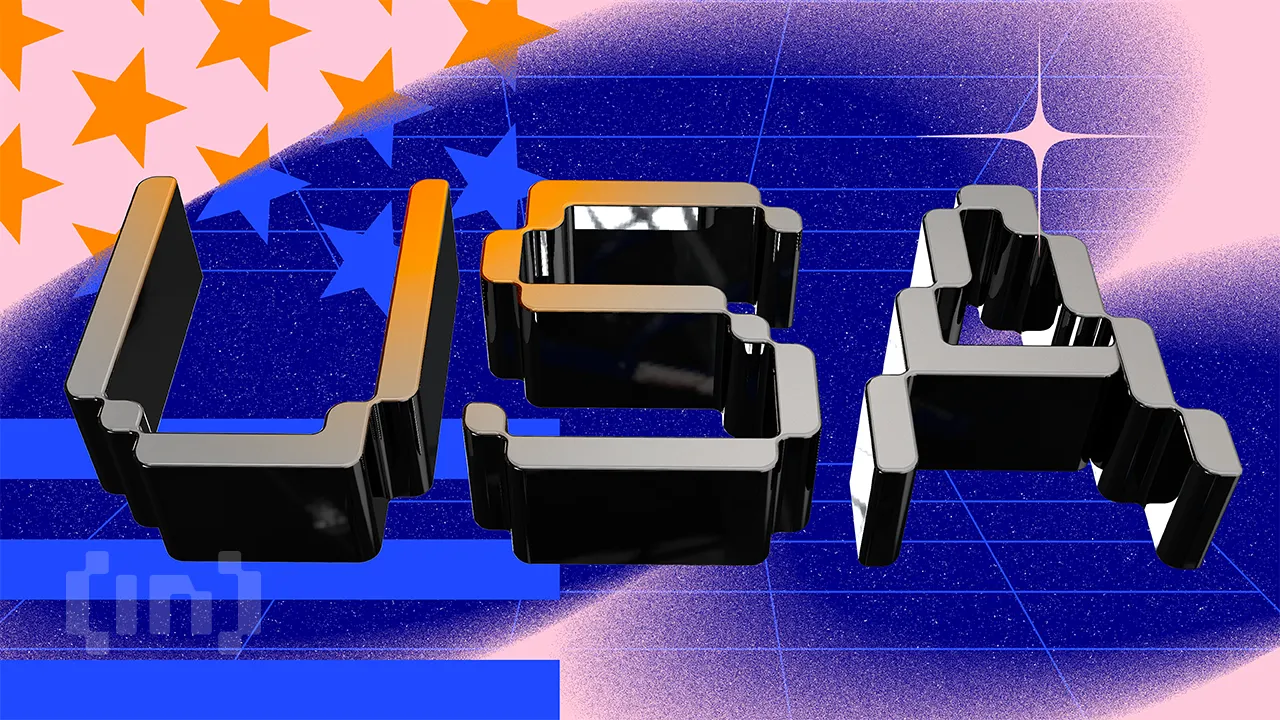
 Bitcoin11 hours ago
Bitcoin11 hours agoUS Economic Indicators to Watch & Potential Impact on Bitcoin
-
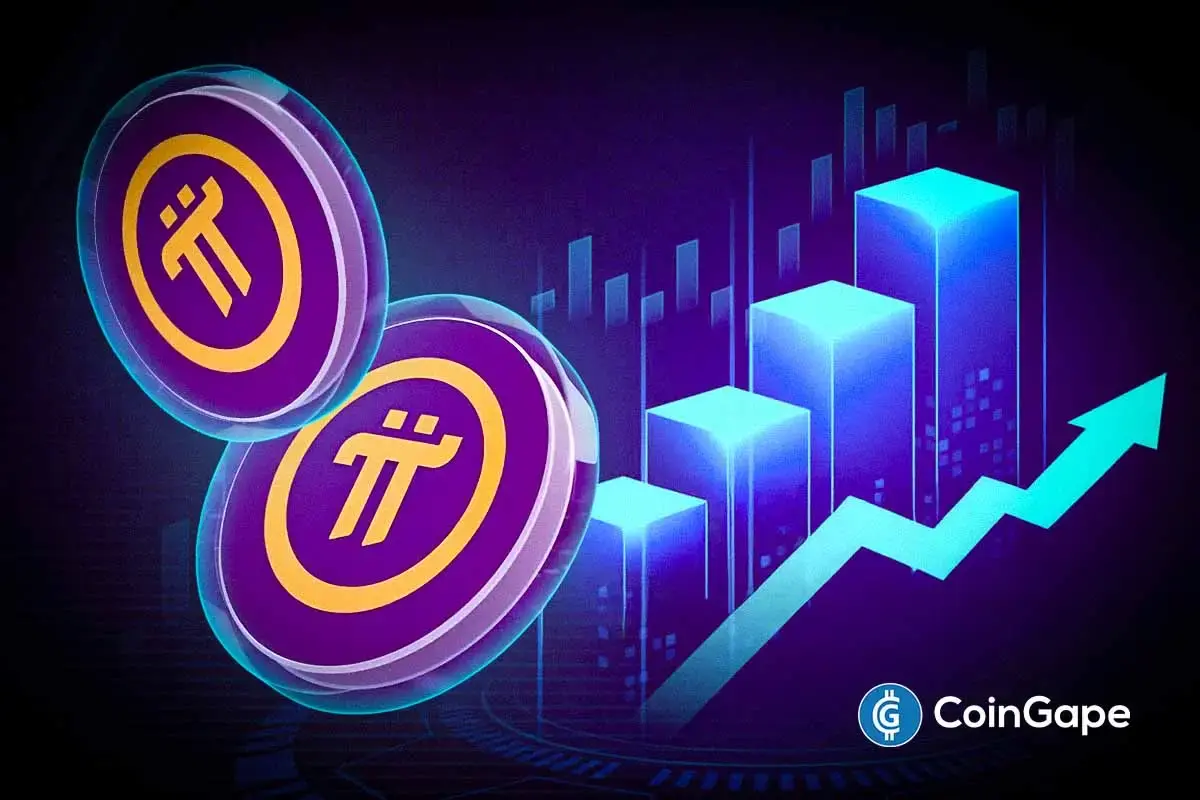
 Altcoin22 hours ago
Altcoin22 hours agoExpert Predicts Pi Network To Reach $5 As Whales Move 41M Pi Coins Off Exchanges
-

 Market20 hours ago
Market20 hours agoWill XRP Break Support and Drop Below $2?
-
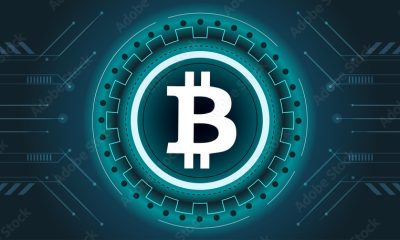
 Bitcoin20 hours ago
Bitcoin20 hours agoBitcoin LTH Selling Pressure Hits Yearly Low — Bull Market Ready For Take Off?
-

 Market13 hours ago
Market13 hours agoBitcoin Price Breakout In Progress—Momentum Builds Above Resistance
-

 Bitcoin17 hours ago
Bitcoin17 hours agoHere Are The Bitcoin Levels To Watch For The Short Term




